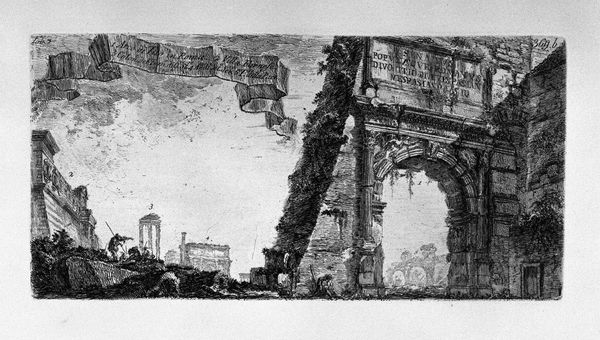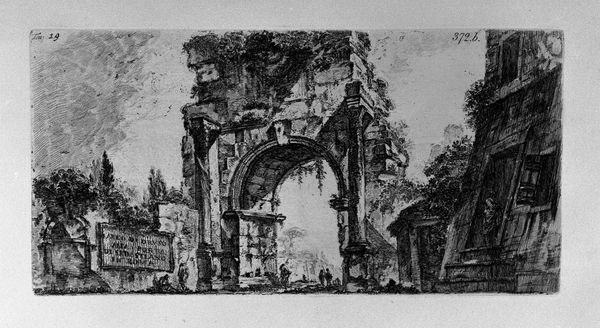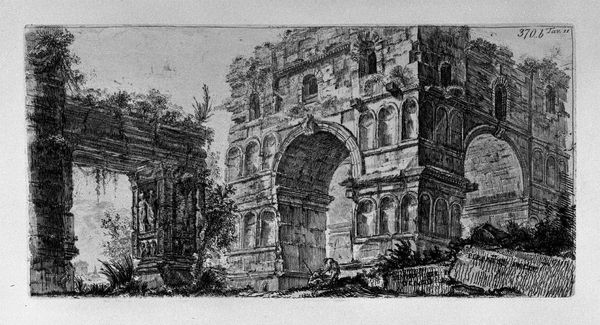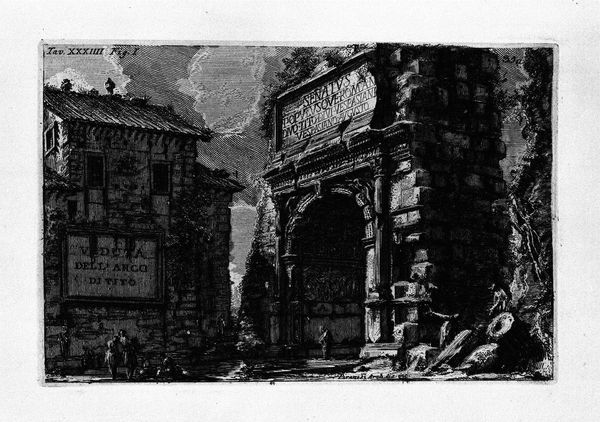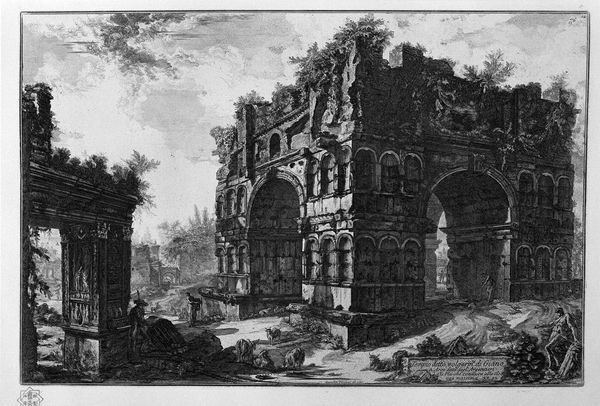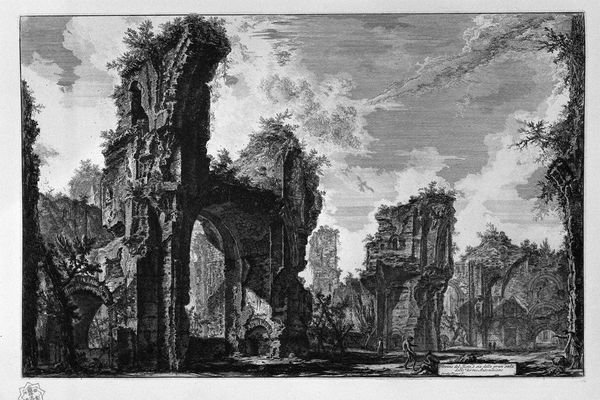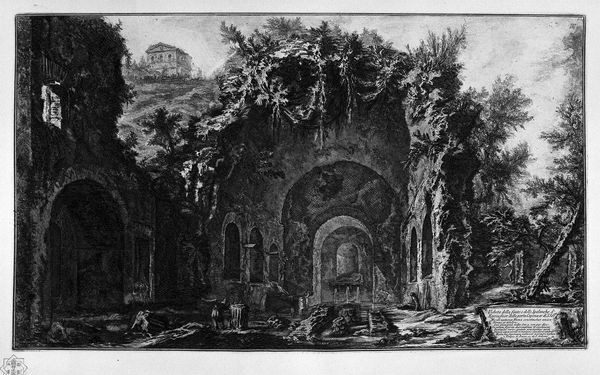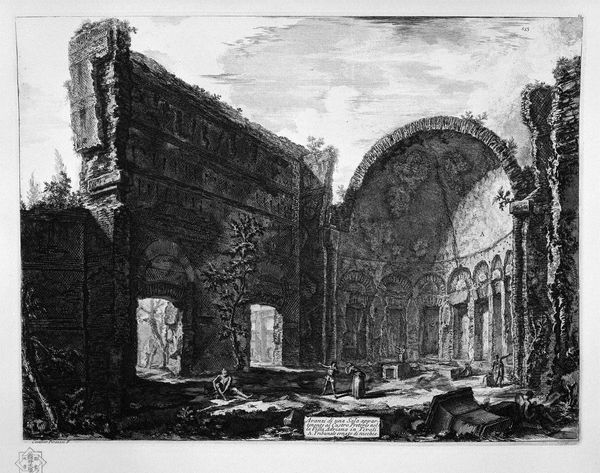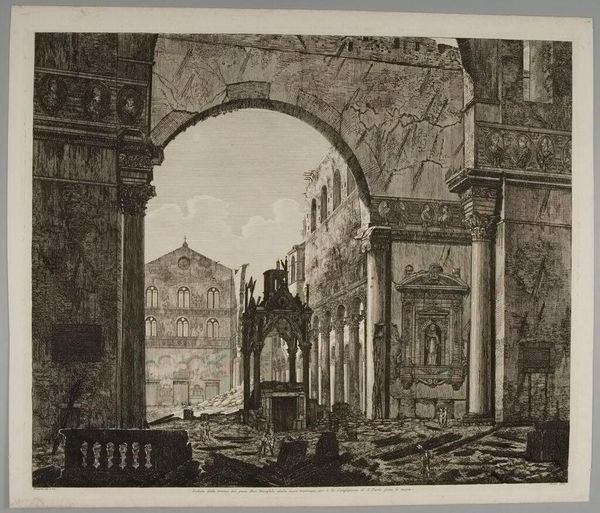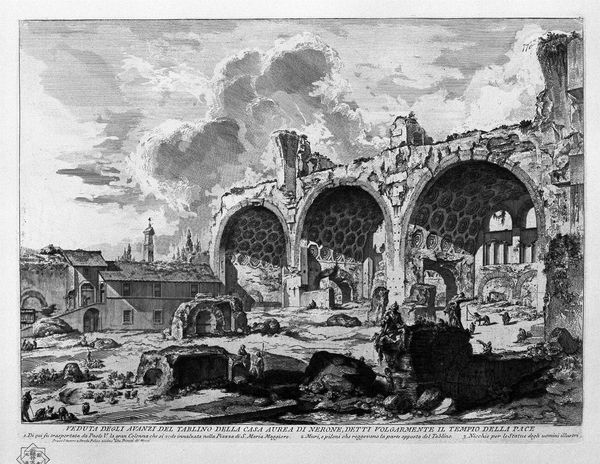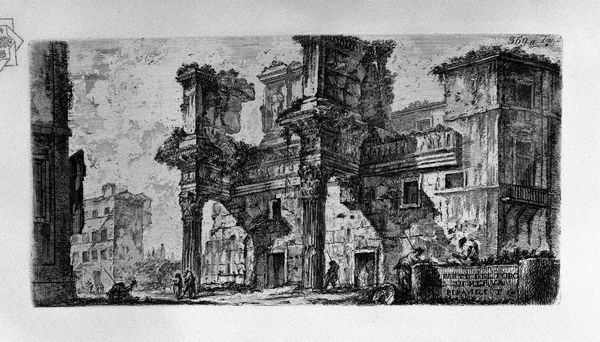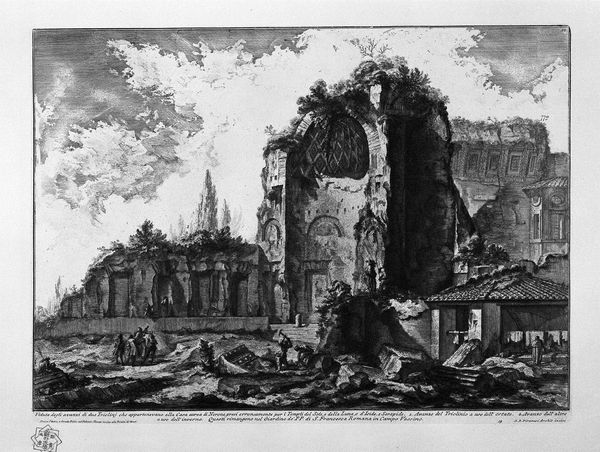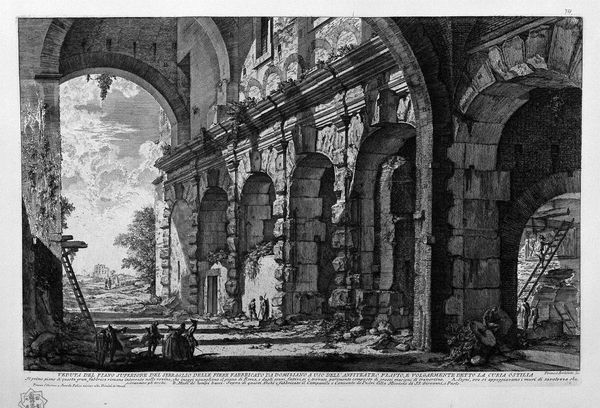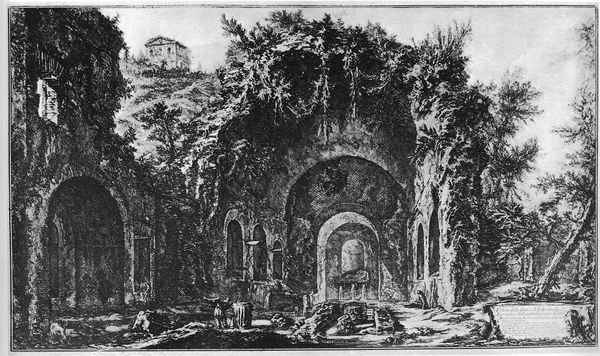
drawing, print, etching, engraving
#
pencil drawn
#
drawing
#
neoclacissism
# print
#
etching
#
pencil sketch
#
landscape
#
charcoal drawing
#
romanesque
#
pencil drawing
#
cityscape
#
history-painting
#
engraving
Copyright: Public domain
Curator: Immediately striking is the contrast between the imposing structure and its state of ruin, there’s an atmosphere of faded grandeur. Editor: This etching, rendered by Giovanni Battista Piranesi, showcases what is believed to be the Rimini bridge. Constructed during the reigns of Emperors Augustus and Tiberius, this image delves into themes of legacy and imperial ambition, particularly in dialogue with modernity. Curator: It's interesting how the crumbling architecture seems almost overgrown, blurring the line between the human and natural realms. It gives the viewer an awareness of how time changes things. Editor: Indeed. Piranesi's skill with etching and engraving enables him to capture the decaying bridge, thick with symbolism of Roman power and subsequent societal shifts. The shadows and lines almost convey a weight of history—a critical study of civilization's rise and fall. Curator: Are those small figures walking around? Editor: Yes, it's not only the bridge that dominates the scene but the modern context within which it stands; he places ordinary people alongside these remnants, emphasizing a dialogue between the contemporary era and the echoes of imperial Rome. His strategic juxtaposition emphasizes how societies evolve and interpret their past. Curator: So, we see the Roman empire not just as fact, but in constant evolution relative to those who came later. Editor: Precisely. In art history, such architectural images offer us more than simple depictions; Piranesi is speaking to continuous re-evaluation—the way historical meanings and aesthetic interpretations reshape collective identities. Curator: It makes you wonder, doesn't it, about what meanings we attach to such structures, and how will future generations view us? Editor: Exactly, and hopefully our dialogue today will prompt a deeper understanding of how the cultural symbols embedded in these structures communicate intergenerationally. This work really helps us contemplate our impact, and what narratives will endure.
Comments
No comments
Be the first to comment and join the conversation on the ultimate creative platform.
